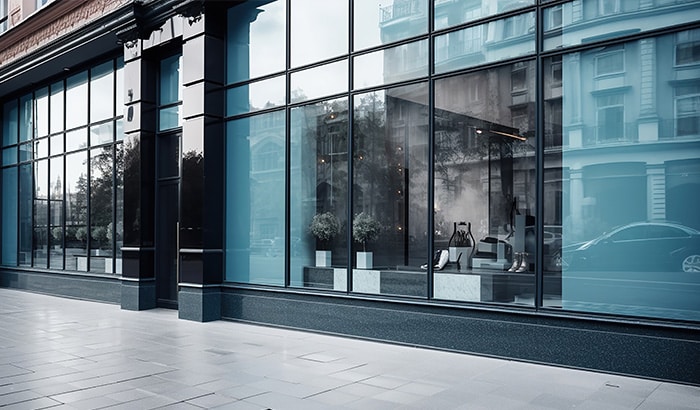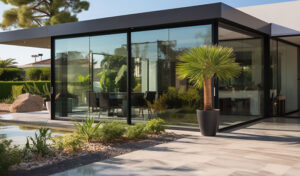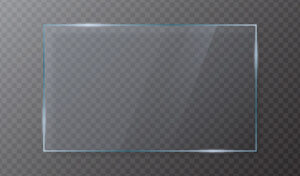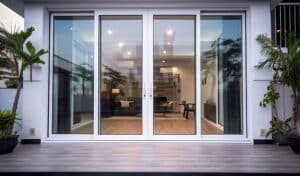Maintaining your commercial windows is about more than looks. Think of your windows as the eyes of your commercial space; they’re the lens through which customers and clients view your establishment. When they’re clean, clear, and well-maintained, they show the world that you care about every detail.
But it’s not just about first impressions. Proper windows are crucial for energy savings. When windows are in tip-top shape, they keep the cold air out in the winter and trap cool air inside during the summer, which saves a fortune on utility bills. On the other hand, a drafty window or one that’s lost its insulation properties will make those energy bills skyrocket.
And it’s not just about money; it’s about comfort. Employees and customers will notice if your space is too hot or cold, which will impact their experience. A comfortable space is inviting, encouraging people to stay longer and return more often.
Over time, like anything else, windows start to show their age, making window repair a necessity. The obvious signs are things like cracks or broken panes. But there are other, less visible signs, like outdated designs that don’t offer the best insulation or stubborn stains that you just can’t seem to scrub away. Each of these issues comes with its own set of challenges and consequences, from higher energy costs to security vulnerabilities.
That’s why it’s so important to keep an eye on your windows and address any issues as soon as they come up. In the long run, taking care of small problems now prevents bigger headaches (and expenses) down the road. So, give your windows the attention they deserve. They’re more than just glass; they’re an essential part of your business’s success.
This article will explore the signs that your commercial windows may need repair. Each sign will be thoroughly examined for its diagnostic characteristics and potential impacts if left unaddressed. Armed with this information, you’ll be able to make informed decisions to ensure the long-term sustainability and safety of your commercial property.
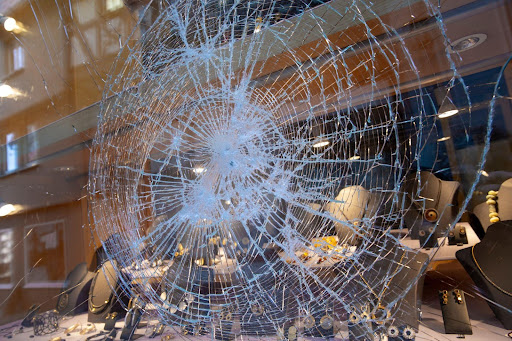
Let’s get started.
1 – Physical Damage to the Glass
Cracked or Broken Glass
There are various types of cracks. Some are small fissures, while others might spread in spiderweb patterns. Depending on the cause and type of glass, you might also encounter large, through-and-through breaks.
Such damages present immediate safety hazards, especially if they shatter. They also provide easy points of entry for external elements, and if the crack expands, it could lead to complete replacement needs. That’s why, as soon as you notice cracked or broken glass, you should have it repaired.
2 – Temperature & Air Flow Issues
Drafts
You might feel an unexpected cold breeze near the window or even observe lightweight curtains or drapes fluttering without any internal source of wind. It’s not a sign that you’re haunted; it’s a drafty window.
Drafty windows significantly increase energy bills, as the HVAC system needs to work overtime to maintain the desired indoor temperature. Prolonged strain leads to wear and tear on HVAC units, extending the damage beyond the initial cost of repair.
Water Leaks
Telltale signs include damp spots on the wall, water stains on the window sill, and peeling or bubbled paint around the window area.
Continued exposure will likely lead to structural issues like rotting frames. Furthermore, mold growth, driven by consistent dampness, can lead to health issues.
Fogging Between Panes
This typically happens in double or triple-paned windows when the seal between them is compromised, leading to condensation within. Such windows lose their insulative properties, leading to temperature inefficiencies and escalating energy costs.
3 – Operational Challenges
Difficulty in Opening or Closing
The window either resists when trying to open or close or shows visible misalignment. Besides the inconvenience and security risk, they might also impede quick exits in the event of an emergency.
Difficulty Locking
The lock might not engage properly, or the mechanisms show signs of rust and deterioration. A window that can’t be properly locked is a glaring security vulnerability you’ll want to resolve immediately.
4 – Design & Aesthetic Issues
Outdated Design
The window may reflect designs from decades ago and lack the features of modern windows, such as efficient sealing or UV protection. Aesthetically, outdated windows might reduce a property’s curb appeal. Functionally, they could lead to higher energy costs.
5 – Frame Problems
Warped Frames
The frame might show twists, bends, or other contortions, especially if made of materials like vinyl that react to temperature changes. Warped frames allow moisture to seep in and might even exert pressure on the glass, risking breakage.
Peeling Paint on Frames
Paint on the frames might start chipping, peeling, or bubbling. Besides the obvious aesthetic concerns, this could indicate prolonged exposure to elements that harm the frame, possibly leading to structural issues down the line.
Insect Infestation
One might notice small burrow holes or even catch sight of live insects like termites. Insects, particularly termites, can cause significant structural damage, leading to hefty repair costs.

6 – Acoustic & Noise Issues
Audible Noise Pollution
Sounds from traffic, neighbors, or other external sources are easily and clearly heard inside, even with windows closed.
Excessive noise will disturb the peace and quiet of an environment. In a commercial setting, it might disrupt employees’ concentration or leave customers with a negative impression.
7 – Structural Integrity
Unstable or Rotted Sills
The window sills might show signs of decay, such as softness when pressed, visible mold or mildew, or even crumbling sections.
Left unaddressed, this could spread to adjacent structures, causing broader structural damage. Moisture intrusion from rotting sills also harms interior walls.
Vibration or Shaking
Windows may shake or vibrate noticeably when there are strong winds, passing heavy vehicles, or other external disturbances. Continuous shaking can weaken the window’s overall structure, making it more susceptible to cracks and breakage.
Damaged or Missing Weatherstripping
Weatherstripping around the window may appear deteriorated, frayed, or may be completely absent. This leads to drafts, which increase energy consumption. Additionally, the absence of proper weatherstripping might allow pests to enter.
Gaps Around the Window Frame
You might observe visible gaps or deteriorated caulk around the window frame. These gaps cause significant energy inefficiencies and allow water to seep in, leading to potential water damage.
Visible Sagging or Structural Deformity
The window may not sit perfectly within its frame, or it might look uneven or misaligned. This usually indicates larger structural issues and leads to increased chances of drafts, water ingress, or even the window becoming non-operational.
8 – Visual Impairments
Condensation Inside the Glass
A clear indication is the appearance of mist, fog, or water droplets trapped between window panes. Such condensation suggests insulation problems. Over time, it may also foster mold growth, which has health implications.
Persistent Stains or Residue
Despite cleaning, certain stains or residues might stubbornly remain on the glass. Apart from being an eyesore, these stains might weaken the structural integrity of the glass over time and reduce visibility through the window.
9 – Security Concerns
Obsolete Security Features
The window may be equipped with older locks or lack modern enhancements like security sensors or reinforced glass. Such windows present a clear vulnerability, making break-ins easier.
Tint Fading or Peeling
The tint applied to windows for UV protection or privacy might show signs of deterioration, such as fading, bubbling, or peeling.
Reduced tint efficacy leads to increased UV radiation entering the space, potentially harming occupants and fading interiors. It can also compromise the energy efficiency of the window.
Now, let’s look at a quick recap:
Window maintenance in a commercial setup has far-reaching implications. At the forefront, there are direct financial implications. By attending to window maintenance promptly, businesses can achieve considerable cost savings. Small issues, when addressed early, typically incur minimal costs.
However, if overlooked, these can evolve into substantial damages. Such extensive repairs burn a hole in the pocket and interrupt regular operations, potentially leading to revenue losses.
Beyond the monetary aspect, the state of windows profoundly impacts a brand’s perceived image. In many ways, a commercial space mirrors the brand’s ethos. Pristine, well-maintained windows amplify the building’s overall visual appeal, casting a favorable impression on clients, partners, and employees. In contrast, neglected windows inadvertently convey a message of unprofessionalism or apathy.
Operational efficiency is another significant dimension influenced by window health. Windows that aren’t sealed properly or have compromised insulation drain energy, resulting in inflated utility bills. A proactive approach to ensuring energy-efficient windows is not just environmentally conscious but also economically wise.
From a health and safety viewpoint, you must address specific window defects for proper window repair. Issues like mold growth from trapped moisture or weakened sills pose real health threats.
Simultaneously, operational glitches like malfunctioning locks or fragile frames jeopardize the building’s security. Regular assessments and prompt interventions are pivotal to circumvent such risks and guarantee a wholesome environment.
Consistent upkeep determines the longevity of the windows and, consequently, the property’s value. By preserving the windows, businesses extend their functional lifespan, which means fewer replacements in the long run. Plus, a building with impeccable windows invariably elevates the property’s market value, ensuring that the commercial space remains a valuable asset.
Repair Your Commercial Glass With Murray Glass!
Dealing with a cracked window and unsure about the next steps? Let the seasoned pros at Murray Glass guide you. We’ve seen all types of window damage, and we know that each situation is unique. Our team isn’t just about patching up a crack; we’re about finding the best solution tailored to your window’s specific needs.
We all know the risks: a cracked window quickly becomes a safety hazard and hurts curb appeal. But here’s the good news – you’re not alone in this.
With one quick call to Murray Glass at 801-262-3364 or a visit to our website, you can set up a consultation, and we’ll be right there to help. Remember, when it comes to cracked glass, it’s always best to rely on specialists who’ve seen and fixed it all. Reach out to us, and let’s get that window looking and functioning like new again!

